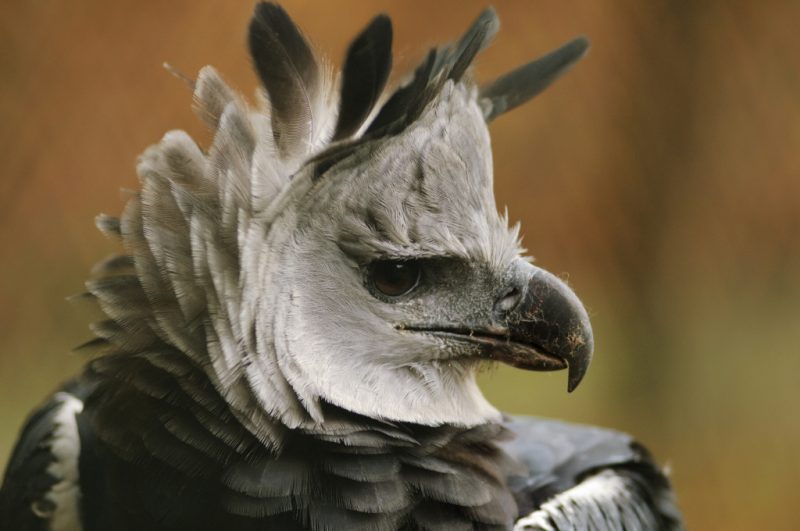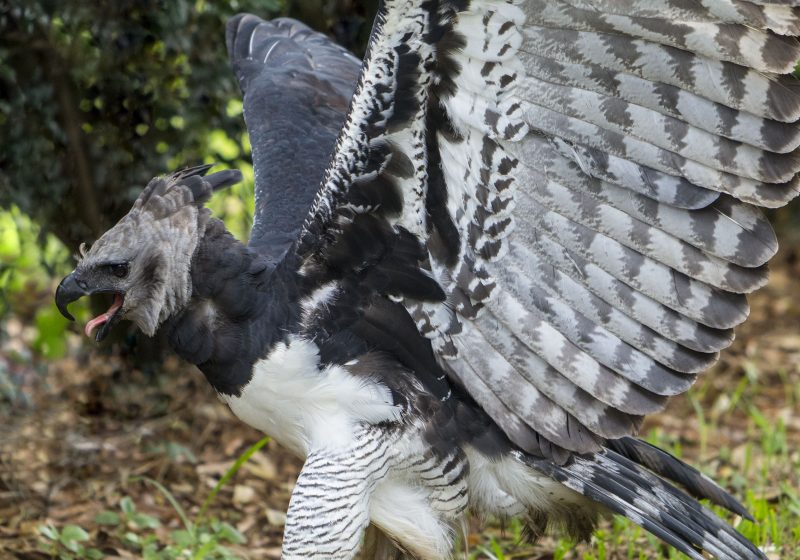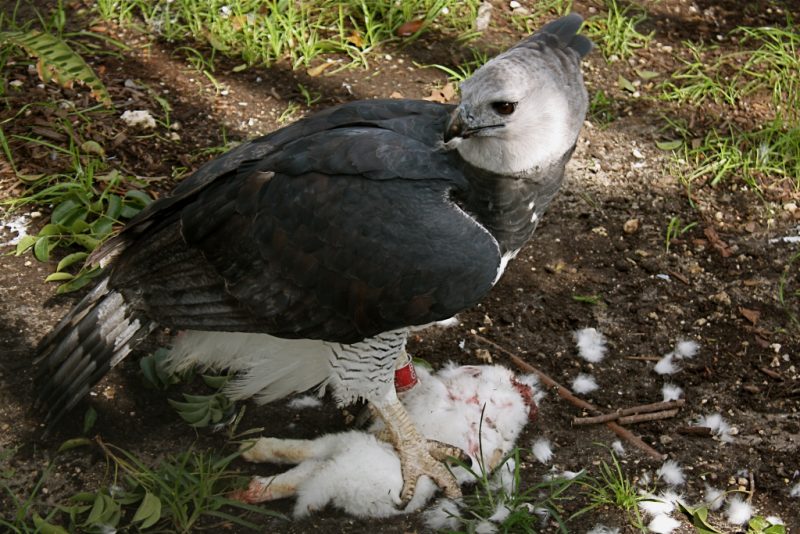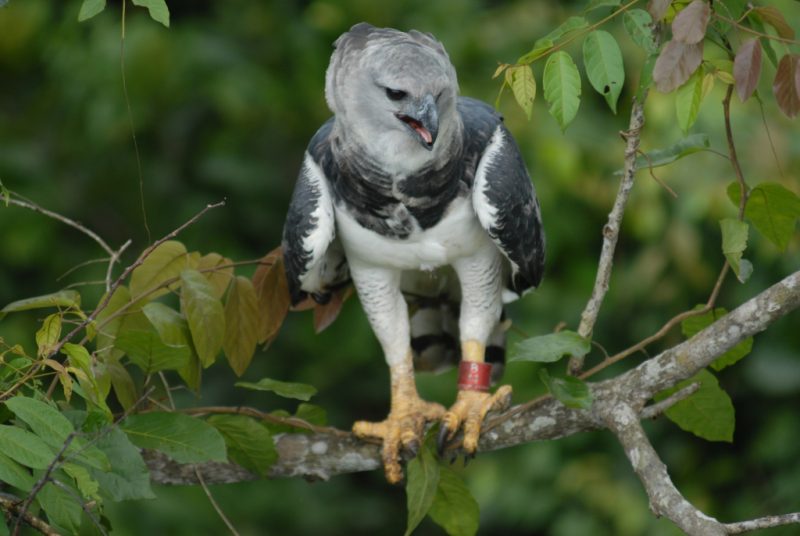The South American harpy is the largest bird of prey belonging to the hawk family. From the ancient Greek language its name is translated as "abduction", since back in ancient times the bird managed to gain an evil reputation. The Indians were sure that with the help of her powerful beak she could easily break the human skull ... and they were not far from the truth.
Material Content:
Description of the South American Harpy
One of the largest in the world is a bird of South American harpy. Her body reaches a length of about a meter, and weight - up to 9 kilograms.

- The area of the back, elytra and chest has a dark gray plumage.
- The lower part and the area under the wings is painted in light color.
- The head is small, the beak is short but powerful, the feathers in this part are wide and dark.
- During excitement, the feathers on the head rise slightly, forming something like a horn, which gives the predator a more intimidating appearance.
- Due to the long and tenacious nails, the harpy is able to lift a fairly large weight.
These birds hunt in the daytime, pick up the prey, which is located on the branches of trees. Despite their large size, birds nimbly ply in the thicket of the forest. They do not kill prey instantly - they tear out the trachea to it, as a result of which the victim remains in a half-dead state for a long time. This approach to hunting allows adults to bring warm food to their offspring. Hunting in open areas, the harpy is able to grab even a small deer.
Wingspan of the hawk family

In flight, this parameter in an adult can reach up to 2 meters, but at the same time, the bird moves perfectly both in open areas and among tropical forests.The harpy is capable of speeds up to 80 km / h, while possessing sharp eyesight and excellent hearing.
South Harpy Habitat
This neotropical bird is represented in Argentina, Mexico, Peru, Brazil and several other South American countries. Predators try to climb into the most remote and secluded corners of the rainforest, as they are especially sensitive to the disturbance factor.

Most often found at an altitude of 0.9 kilometers, but individuals were found that climbed to a 2-kilometer height. In most cases, build nests on the trees of the Brazil nut.
Today, there are about 50 thousand representatives of the South American harpy. Their number is constantly decreasing. This is mainly affected by the destruction of forests in which birds nest. In addition, chicks in these representatives of the fauna appear on average once every 2 to 3 years.
Interesting facts about the bird of prey

What is interesting to know about the bird:
- Harpy is a symbol of Panama. It is her image that can be seen on the coat of arms of the state.
- Often, the bird is confused with a forest eagle, which nests in the forests of South and Central America.
- This is one of the strongest birds, it can harm even humans, often it shows aggression and irritability.
- Due to the long claws (up to 10 centimeters), her paws can rightfully be considered the most powerful weapon.
- Harpy can easily attack a small roe deer or dog.
- The basis of her diet is fast monkeys and sloths critically inferior to them in speed, but she can also enjoy a nosoha, possum and even a macaw parrot.
- This type of bird is the only one that can easily feast on porcupine.
- Attacks on people are possible if they enter its territory. A case was recorded when 8 stitches were imposed on a person due to an unexpected meeting with a predator.
- For 2 weeks, the harpy can remain without food and at the same time not experience any discomfort.
Behavior features
The mating season falls on April - May. Harpies build their nests on tall trees, at the level of 50 - 75 meters, and also try to choose a place near the reservoir. The nest is spacious, consists of large branches, and the inside is lined with moss and leaves. It can be used for many years.

One laying of the female consists of 1 or 2 eggs with a yellowish tint. As practice shows, a bird feeds only the chick that was born first, the second, as a rule, dies from a lack of food.
During nesting, birds display particular aggression and cruelty. They even attack people if they somehow disturb them.
The development of the South American harpy chick is rather slow, so the parents are forced to take care of him for a long time. Birds begin to fly at 8 - 10 months of life, but at the same time they still need food from their parents. Adults from this moment visit their chicks less and less, bringing food with them. Without food, chicks can remain up to 2 weeks. Harpy puberty begins at 4 years old, at this time the plumage acquires a brighter and more saturated shade. The maximum life span of a bird is 30 years.












